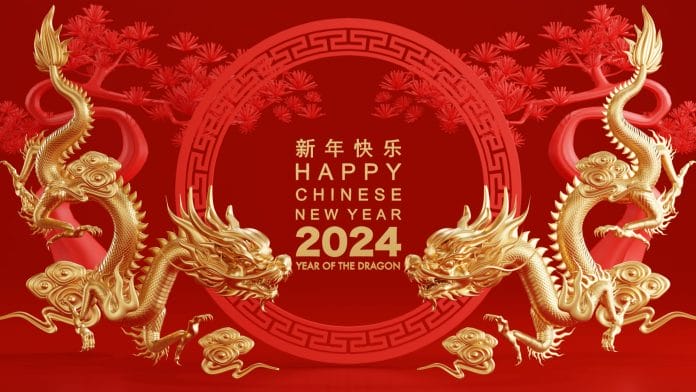At this very moment, millions of people around the world are busy celebrating for one of the year’s biggest festivals – Lunar New Year, which marks the first new moon of the lunar calendar. This year, it falls on February 10, kicking off the 15-day Spring Festival.
Though incredibly complex, the Chinese zodiac calendar is best described as a 12-year cycle represented by 12 different animals, in this order: Rat, Ox, Tiger, Rabbit, Dragon, Snake, Horse, Goat, Monkey, Rooster, Dog and Pig. Your personal zodiac animal sign is determined by your year of birth, meaning 2024 will welcome plenty of baby dragons to the world. Those born in 2025 will be snakes, and so on.
Followers believe that for each Chinese zodiac sign, luck will depend largely on the positions of the Tai Sui – a collective name for the stellar deities thought to rotate parallel to and in the opposite direction of Jupiter.
Different geomancy masters may interpret the data differently, but there is usually a consensus on what the year means for each zodiac animal based on the positions of the stars.
There are countless folk tales attached to Lunar New Year, but the myth of “Nian” stands out as one of the most fun.
Legend has it Nian was a ferocious underwater beast with sharp teeth and horns. Every Lunar New Year’s Eve, it crawled onto the land and attacked a nearby village.
On one such occasion, as the villagers rushed into hiding, a mysterious old man showed up and insisted on sticking around despite being warned of impending doom.
To the villagers’ surprise, the old man and the village survived utterly unscathed.
The man claimed to have scared Nian away by hanging red banners on the door, lighting firecrackers and donning red clothing.
This is why wearing the fiery colour, along with hanging red banners and lighting firecrackers or fireworks, are Lunar New Year traditions, all of which are still followed today.
Fun aside, Lunar New Year can actually be a lot of work. Festivities often last for 15 days – sometimes even more – with different tasks and activities taking place over that period.
The first few days of the Lunar New Year, many people have to travel and visit immediate family, other relatives and friends. Bags are stocked with presents and fruits to give out at homes visited. Visitors will in turn be showered with gifts after exchanging conversations over Lunar New Year treats.
Married people also have to give out red packets to those who haven’t yet tied the knot – both children and unmarried juniors. It’s believed these envelopes – known as hongbao/lai see – could protect children by warding off evil spirits called sui.
Day three of the Lunar New Year (which falls on February 12 in 2024) is named “chi kou/cek hau,” or red mouth.
It’s believed that arguments are more likely to happen on this day, so people will avoid social interactions and instead visit temples.
While there, some will use the opportunity to make offerings to offset any potential bad luck. As noted earlier, for many people Lunar New Year is a time to consult the stars to find out what lies ahead in the coming months.
Every year, certain Chinese zodiac signs clash with the stars negatively so temple visits are considered a good way to resolve those conflicts and bring peace in the coming months.
The Management and Staff of BusinessToday wish all celebrating a Happy Chinese New Year, Xin Nian Kuai Le!









